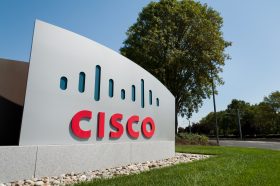VMware Extends AWS Integration

VMware at the VMworld 2018 conference today, in addition to announcing
additional availability of VMware for AWS in Asia Pacific, revealed that is
making available an instance of its NSX network virtualization (NV) software
that can be deployed on top of AWS Direct Connect.
That capability provides a dedicated network alternative to setting up a virtual private network (VPN) over a public Internet connect to connect local data centers with the AWS cloud, says Mark Lohmeyer, senior vice president and general manager for the Cloud Platform Business Unit at VMware.
At the same time, VMware also announced that security policies that enable microsegmentaion can now be applied to workloads running in AWS that are connected using NSX.
VMware also announced it is making it simpler to migrate application workloads into AWS. An Instant Data Center capability makes it possible to first transfer workloads and data into AWS using VMware VSphere Replication tools. A software-defined data center (SDDC) can then be instantly turned on by using VMware vMotion to transfer the last remaining elements of the data center just prior to launching it. That combination of tools promises to significantly reduce the amount of time required to transfer workloads into AWS.
“It might take a few days to a few weeks depending on the customer,” says Lohmeyer.
As part of that offering VMware is also now offering a free migration cost assessment as well.
VMware is also moving to reduce the cost of entry for VMware for AWS by 50 percent for a limited time and is also making available a three-node configuration option. Previously, VMware required customers to set up a minimum four-node configuration. VMware will enable IT organizations to configure three-host software-defined data center (SDDC) for the prices of two hosts. VMware is further helping to reduce cost by making it possible for IT organizations to also specify the number of processor core counts for Oracle and Microsoft applications. By pinning application workloads to a CPU using a VM-Host Affinity tool, the number of cores employed by a Oracle or Microsoft applications can be contained. Because licensing for Oracle and Microsoft software is based on the number of cores employed, there’s a significant opportunity to reduce the total cost of deploying application in the cloud.
Finally, VMware also announced today that it has added support for the Amazon Elastic Block Store cloud service, a set of tools that make it simpler to scale clusters up and down, and a free log auditing tool.
The reach of the VMware cloud continues to expand with the opening a new region for VMware on AWS in Sydney, which complements existing regions in the U.S., Germany, Japan, and London. Global expansion of the VMware for AWS cloud service has become a high priority, says Sandy Carter, vice president for EC2 Windows Enterprise Workloads for AWS.
“It’s the number one ask for our customers,” says Carter.
At a time when more IT organizations than ever are employing multiple clouds, VMware is clearly anxious to continue to expand its presence beyond enterprise IT environments. Late last week, VMware revealed that in its most recent second quarter, 150 providers of IT services have signed up to be part of the VMware for AWS partner program and that 50 of them are already driving transactions.
VMware also revealed significant progress in terms of NSX adoption. VMware CEO Pat Gelsinger during a conference call with financial analysts revealed that 7,500 customers have now adopted NSX.
It may take a while longer for VMware to fully realize its multi-cloud ambitions. But it’s already clear that VMware vSphere has become a major springboard for extending the reach of VMware both inside and out of the data center.




















